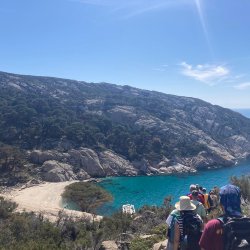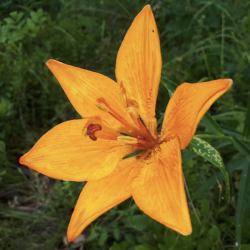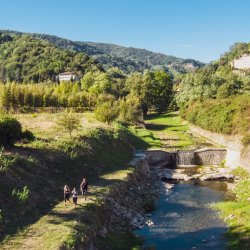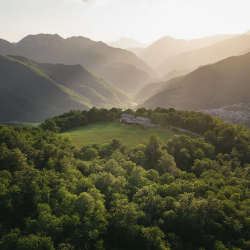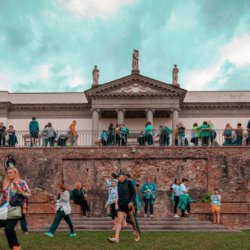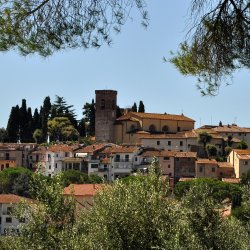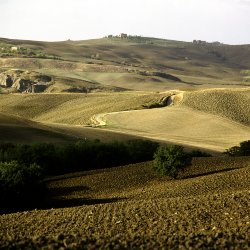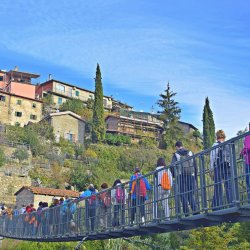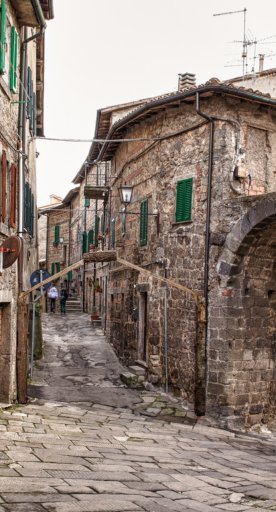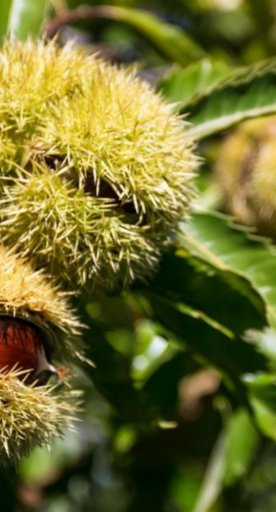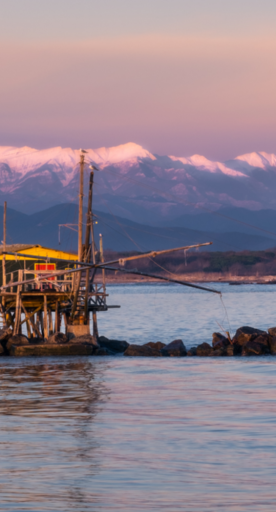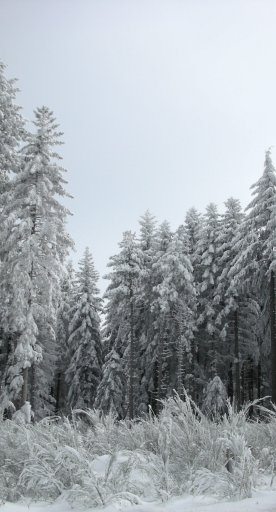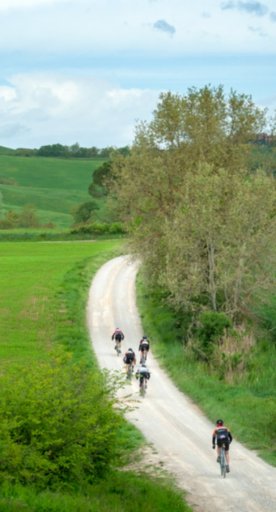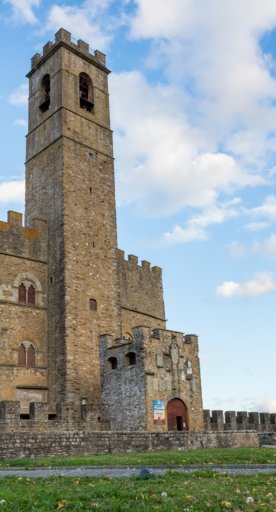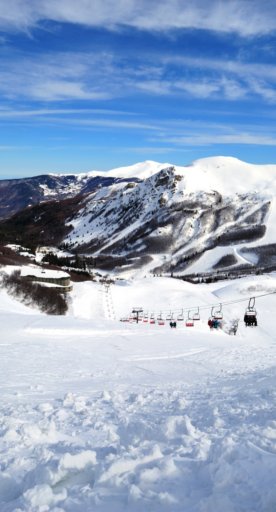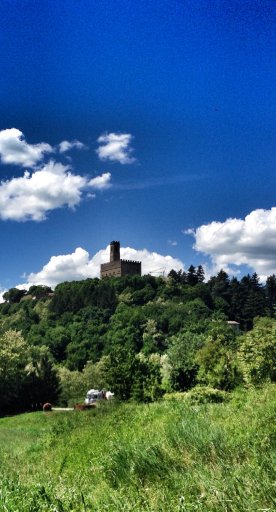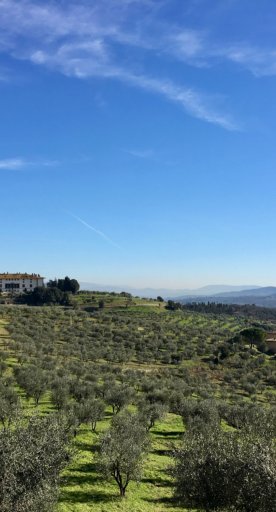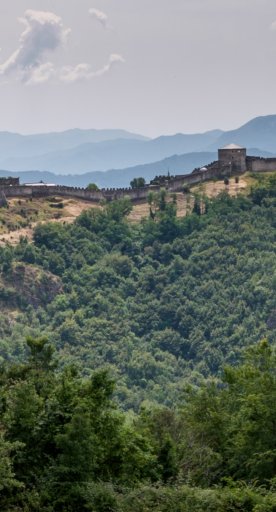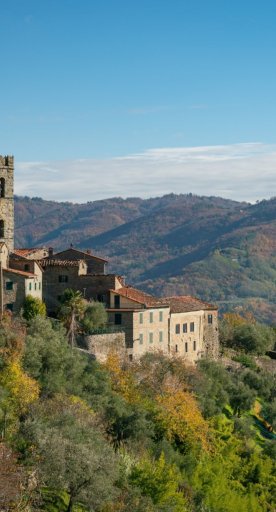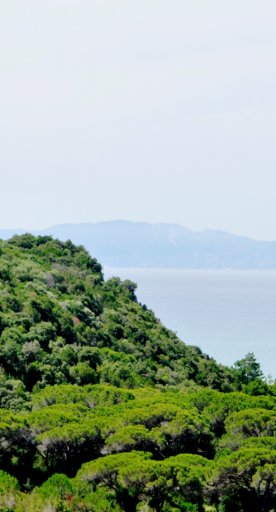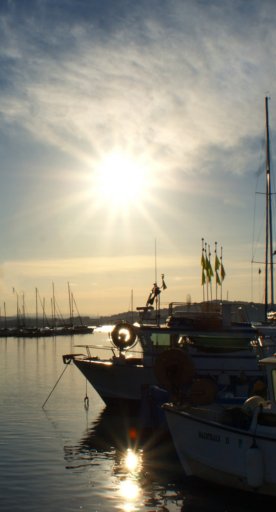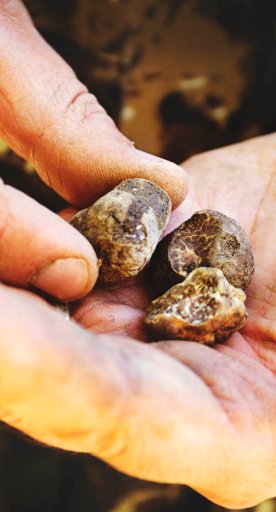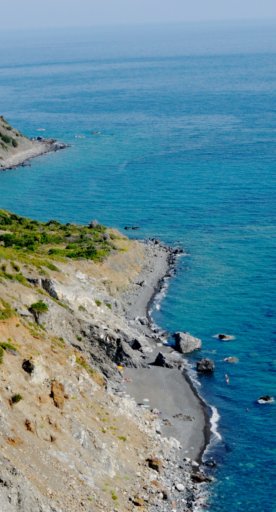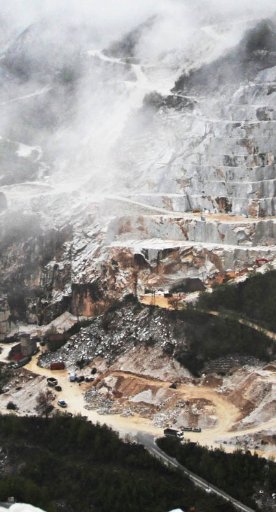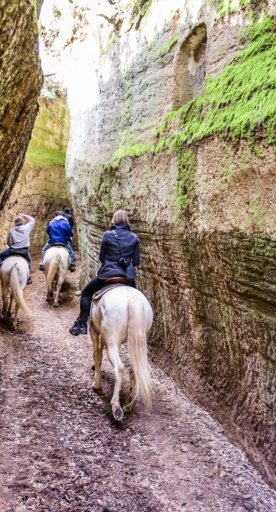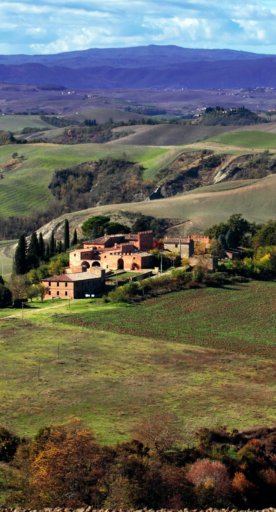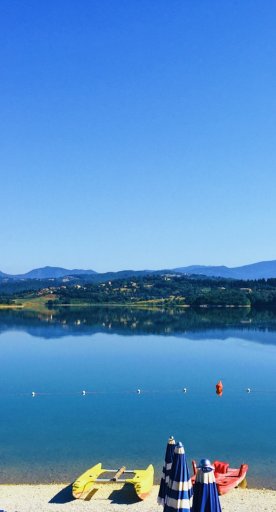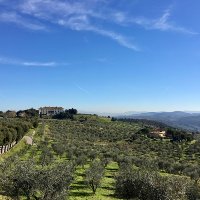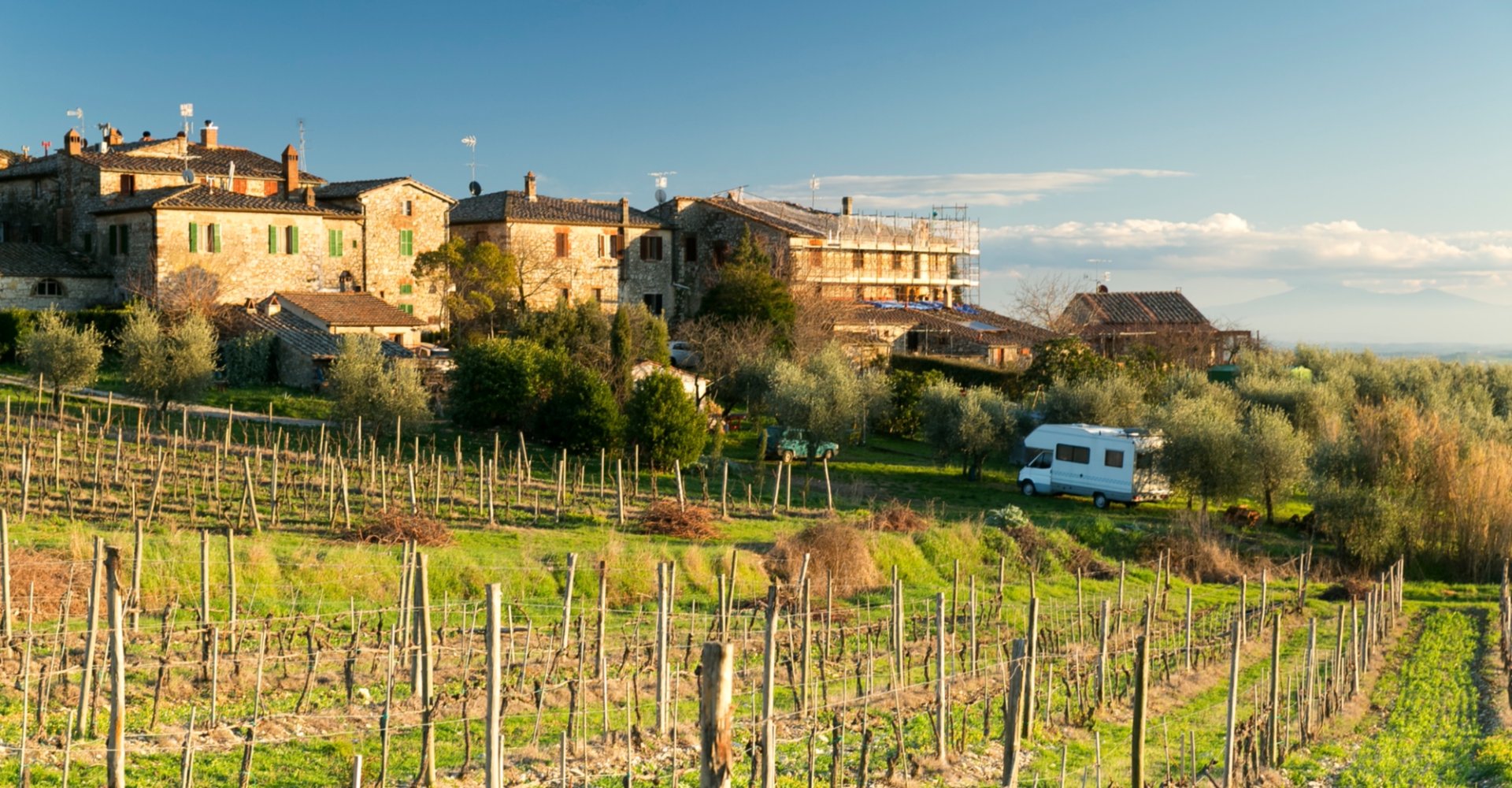

By camper in the hills of Chianti Classico
Ideas for a trip by camper or caravan to the production sites of one of the most famous wines in the world
Stroll among the vineyards, taste great wines, visit some of the most prestigious wineries in Italy, at a slow pace, without schedules or constraints, with the freedom that only a camper gives.
-
1.Gaiole in Chianti
-
2.Greve in Chianti
-
3.Radda in Chianti
-
4.Castelnuovo Berardenga
-
5.Castellina in Chianti
Gaiole in Chianti
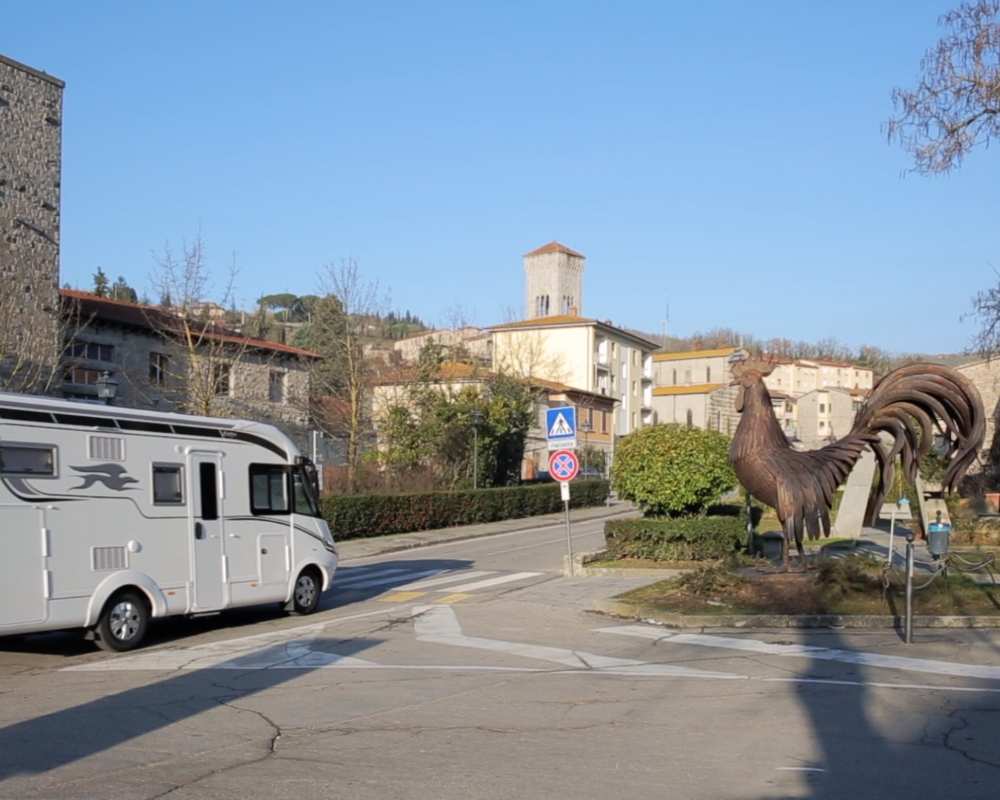
Strolling through the small center, from the neo-Gothic church of San Sigismondo, with its facade clad in local stone, we reach Piazza Ricasoli, then the gateway to the village and the nearby Black Rooster, a wrought-iron work more than three meters high by artist Fabio Zacchei, whose subject is inspired by a medieval legend. The Black Rooster is the symbol of Chianti Classico DOCG, one of Tuscany's wines of excellence, which has its production area in these territories straddling the areas of Florence and Siena. So, for those who love good wine, a tasting in one of the wine shops or cellars in the village is a must.
Find a rest area on Via Michelangelo Buonarroti, in the parking lot by the sports field. A new lighted and video-monitored parking area was recently opened, accessible from Via Alcide De Gasperi.
Greve in Chianti
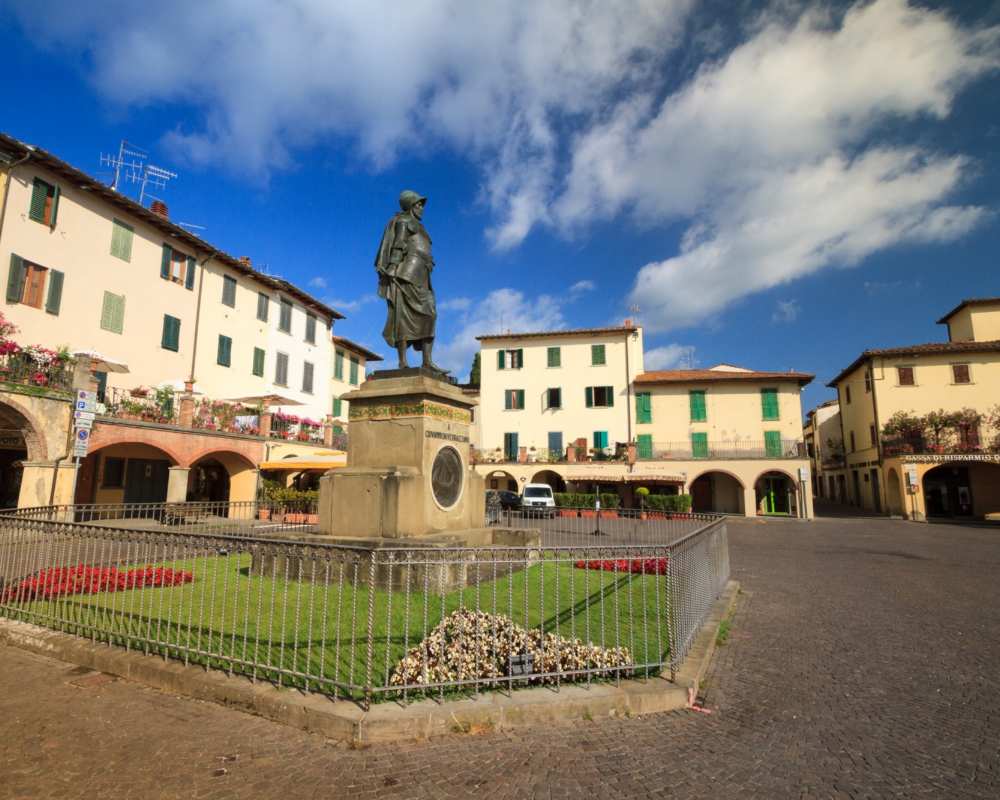
The village of Greve in Chianti offers many enticing opportunities. A stroll through Piazza Matteotti, a coffee under the arcades, a taste of cured meats at the historic Antica Macelleria Falorni (butcher shop), active since 1806.
The camper parking area is Via Montebeni, adjacent to the municipal swimming pool.
Then we recommend going up to Verrazzano Castle, a two-hundred-and-thirty-acre estate that has kept its boundaries intact for nearly a thousand years. The family from which it takes its name boasts the explorer Giovanni da Verrazzano, who in 1524 discovered the bay where New York City stands (the Verrazano-Narrows Bridge, the bridge that connects Brooklyn to Staten Island, is dedicated to him).
Also worth visiting is the hamlet of Panzano in Chianti, where the Antica Macelleria Cecchini (butcher shop), founded over two hundred and fifty years ago, is located.
Radda in Chianti
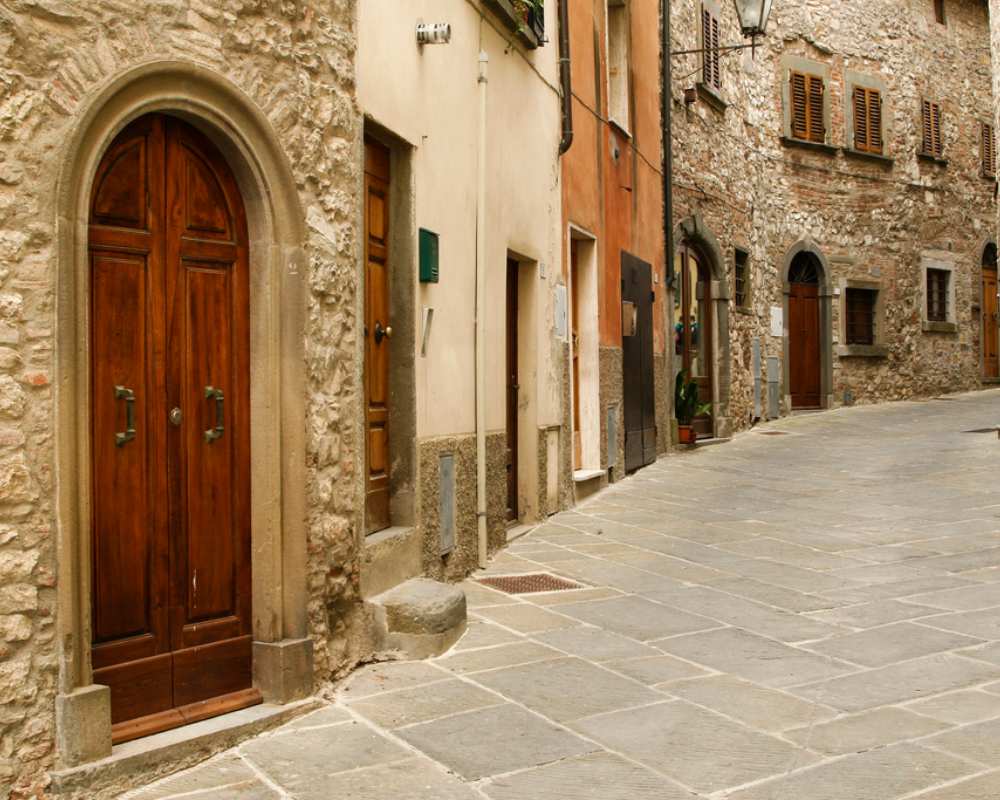
Once in Radda in Chianti, stroll along the medieval walkways to discover its beauty.
The heart of the village, dominated by what remains of the original castle, is Piazza Ferrucci, where the Podestà Palace (14th century), the historic seat of the Municipality, and the Propositura di San Niccolò with its neo-Gothic facade are located.
One hundred meters from the village we find a dedicated rest area (in Via degli Ulivi).
Nearby, we recommend visiting at least Volpaia, a fortified village of medieval origin, today famous for the production of one of the wines considered among the best in the world.
Castelnuovo Berardenga
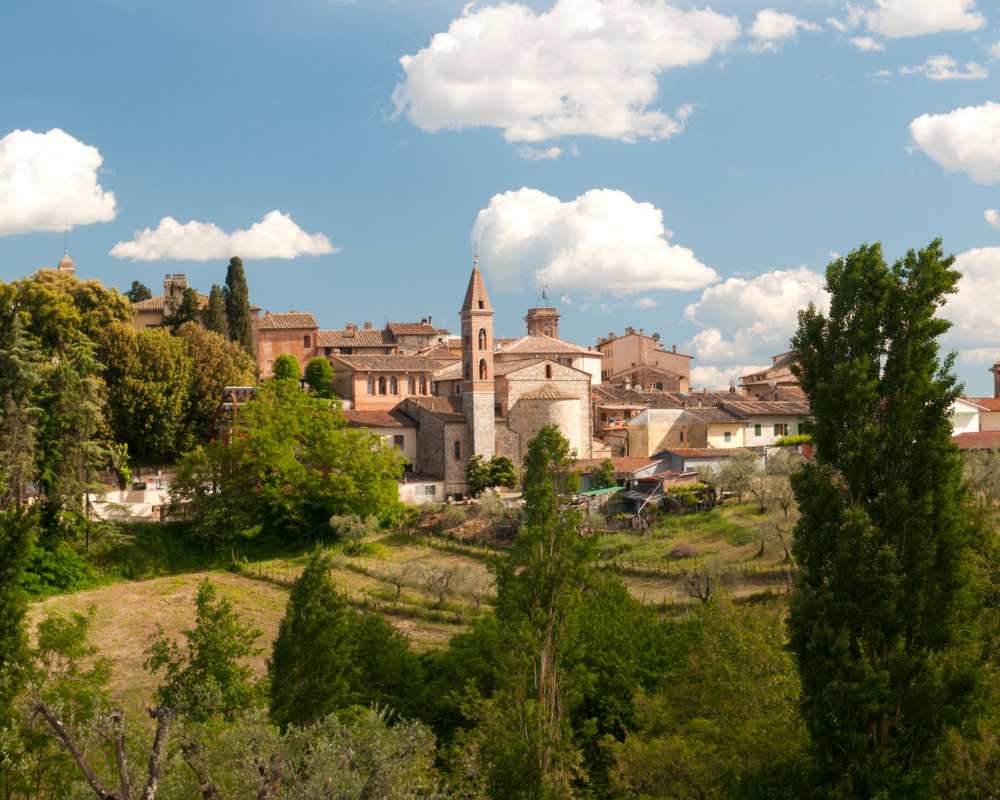
Worth visiting are the elegant complex of Villa Chigi Saracini with its Italian garden and a 19th‑century park of considerable botanical importance, the medieval tower, and Piazza Castellare, the heart of the village. Castelnuovo Berardenga is also home to a unique museum, the Landscape Museum, housed in a late 19th-century building.
A parking area for campers is located at Via delle Fonti, location Pianella.
One of the most remarkable facts of Castelnuovo's medieval history is the flourishing in this area of a very large number of castles, but also of numerous Romanesque parish churches. We therefore recommend that you take the time to visit the surroundings of this village as well.
Castellina in Chianti
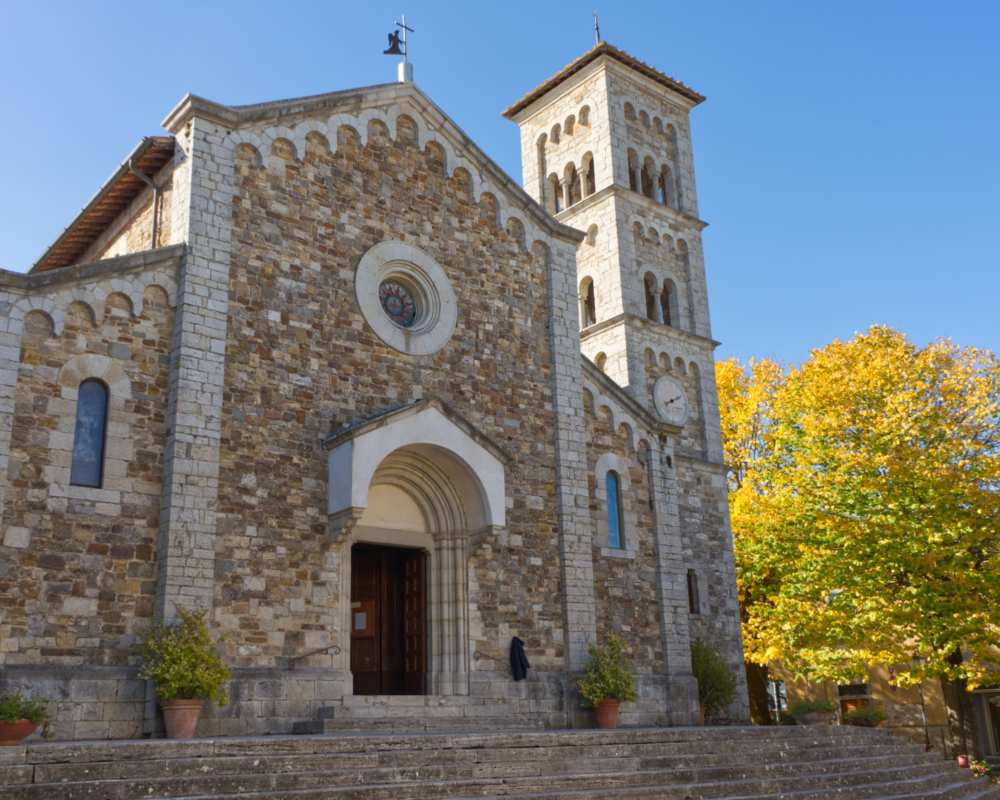
Within the walls the town has preserved the architectural layout of when it was Florence's outpost in the Sienese territories in the Middle Ages. We are welcomed by the medieval Church of San Salvatore, destroyed during the last war and rebuilt in neo-Romanesque style.
In Via delle Volte, the ancient walkway takes us to the exit onto Via Ferruccio and from here to the late Renaissance-style Ugolini-Squarcialupi Palace. An alley goes up to the 14th-century fortress, home to the town hall and the Archeological Museum of Sienese Chianti.
Worth visiting is the Montecalvario Tumulus, on the outskirts of the town, not far from the equipped area where campers can park (Regional Road 222 Chiantigiana 43 km).
Castellina in Chianti stretches in an area rich in woods, dotted with remains of the Etruscan civilization, an ideal location for those who love slow tourism.

